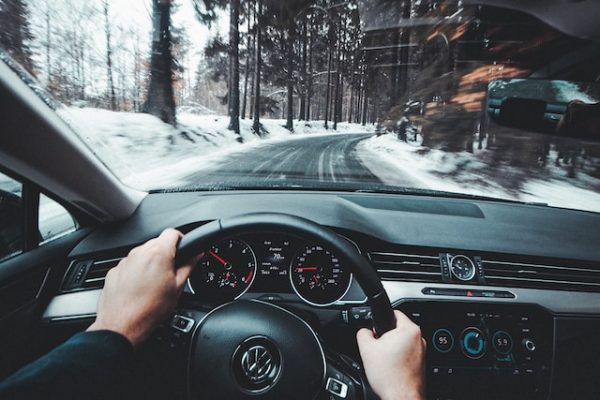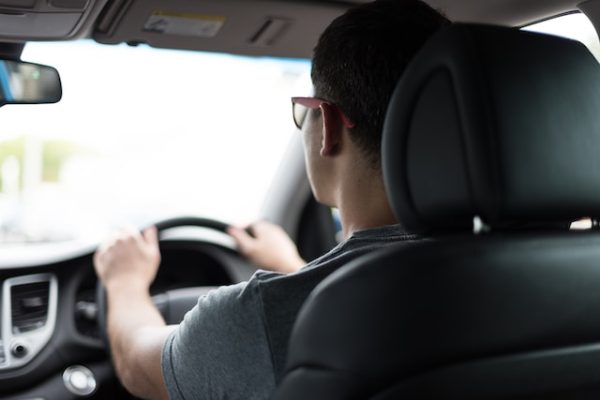Driving lessons are the de facto way to learn how to drive, but how many of us are confident in our driving abilities as soon as we pass our driving tests? If you’re like most people, then you probably don’t feel completely safe when it comes to driving on the road. Sure, you passed with flying colors and you feel comfortable when your instructor is beside you, but you might still have that small doubt in the back of your head that you’re not quite ready to be left on your own.
So whether you’re curious about extra driving tips or want a bit of a confidence boost, here are some tips that they probably didn’t teach you during your lessons.

Your hand position on the steering wheel
One of the things that most people are taught is to keep their hands on the 10 and 2 positions on the wheel. This is the most common suggestion that the majority of older driving schools teach. However, modern research and studies have suggested that putting your hands on the 9 and 3 position is now preferred because of the way that new airbags are installed. It could potentially reduce the risk of injury because your hands won’t be in the way of the airbag expanding should you end up in a car accident.
In reality, steering wheel hand positions can change depending on someone’s grip on the wheel, their personal comfort, and also the vehicle they’re driving. Some instructors would even suggest holding your hands at the 8 and 4 positions for even more safety and control. The reality is that these are all valid options, and you should try what feels most natural for you.
As a bonus tip, remember that you should always try to have both hands on the steering wheel at all times. If you don’t, then you’re probably trying to drive one-handed, and that’s usually a bad sign. Ask yourself why your other hand is occupied. At best, it should be because you’re adjusting something on the dashboard, or moving your hand to shift gears. It shouldn’t be because you’re playing with your hair, tapping on your phone, or having a smoke!
Knowing what to do if you end up crashing
Many of us practice defensive driving tips to ensure we never get into an accident, but the reality is that most people end up in one sooner or later, even if they’re trying their hardest to avoid it. Learning what to do in the event of a car accident is really important. It’s knowledge that we never want to actually use, but will be invaluable should you ever run into this situation.
For starters, make sure you remain as calm as possible. This will ensure that you’re thinking clearly and that you can make the right decisions in the heat of the moment. Secondly, check yourself for injuries first. Make sure you’re in good condition and then proceed to help others and check on their status. If you’re in bad shape, try to get out of the vehicle as safely as possible and request help if available. Moving you and your passengers to a safe location should be your number one priority here.
Next, you should call the relevant authorities and services. Get in touch with the police if it’s a severe accident, and contact an ambulance if someone is injured. Once all calls have been made, you can proceed to exchange information with other people as this may be required to make insurance claims in the future. This means exchanging names, addresses, and phone numbers. If someone refuses to cooperate, then don’t try to push them–let your insurance company or attorney deal with it later.
Documenting the scene comes next. Take some pictures and keep all of the information you’ve gathered safely on your phone or in a notebook.
Lastly, remember that you do not admit fault, as this could be seen as an admission of guilt. Only talk facts, don’t apologize, and don’t admit it was your fault. If you have to, don’t talk to anyone else and stay quiet so that you’re not tricked or bullied into admitting it was your fault.
Afterward, you may want to contact a towing service to help you get your car to a garage if it’s completely wrecked. If not, then you can still get in touch with a local mechanic so they can have a look at your vehicle. You should consider yourself lucky if the car even still works! Some cosmetic damage can always be fixed, but engine-related problems are a lot more expensive to fix. If needed, make arrangements for a car rental if you won’t have a working vehicle for the next few days or weeks.

Adapting your vehicle to different weather conditions
One of the things you’ve got to learn is how to adapt to different weather conditions. If you live in a part of the world that seldom gets rain or snow, then you might be lucky enough that you don’t have to deal with this. However, if you live somewhere that has seasonal snow and rain, then you’ll probably want to learn how to drive in poor weather conditions.
The basics are pretty straightforward for all weather conditions. You drive slowly, make sure you avoid flooded areas, and always be on the lookout for other cars and people when driving. Stay up-to-date for weather warnings and make sure your usual roads and routes aren’t blocked in some way due to the weather.
You’ll also want to keep car maintenance in mind as well. Lots of people forget that different tires exist for different road conditions. Winter tires are essential for bad weather because they offer far more traction than standard tires, so they’re less prone to slipping around when you’re driving in bad conditions. The sooner you do this and get used to changing them each season, the more confident you’ll be when driving during bad weather.
Understanding the value of post-accident legal guidance
Even after doing everything right behind the wheel, the unexpected can still happen, and when it does, it’s not just about physical recovery or vehicle repairs. There’s a legal side to consider as well. Once the dust settles and the adrenaline wears off, many drivers find themselves unsure about what comes next in terms of liability, claims, or compensation. Seeking professional guidance becomes more than just a smart move; it’s a necessary one. A car accident lawyer can help you navigate insurance claims, defend your rights, and ensure you’re not left vulnerable to costly mistakes. Whether it’s unclear fault, denied claims, or confusing paperwork, having someone experienced on your side can make a huge difference in how smoothly the aftermath of an accident is handled.
Distractions will come in many different shapes and sizes
And for our last tip, remember that distractions will come in many different forms, which is a golden lesson that any great traffic school provider has to repeatedly explore with their clients . It’s not just your phone or other drivers that you need to worry about. Something as simple as an itchy nose or a yawn will distract you and potentially cause an accident if you’re not careful!
There are usually three different kinds of distractions that could affect you. The first group is visual distractions. This is anything that might take your eyes off the road for a moment, such as looking at your GPS or checking a notification on your phone. These are dangerous because road conditions can change at any time, hence why you always need to keep your eyes on the road.
The next kind of distraction is a steering distraction. This is something that takes your hands off the wheel which can hinder your reaction speed. You might reach for your phone, adjust something on your dashboard, or even take your hand off to scratch your nose. These kinds of distractions are often minor but can be problematic when mixed with other kinds of distractions.
And the last kind is a mental distraction. These involve distractions that take your mind off driving, such as thinking about something unrelated, having a conversation, or even dozing off. These are all incredibly dangerous and could lead to accidents if you don’t quickly snap out of it and focus on driving again.
With so many driving distractions, it’s important to always focus on driving and to keep your eyes on the road. If you take your attention off it for even a second, you could potentially end up in an accident with serious consequences.

